Chess Piece Moves Guide
Ever wondered “How does each chess piece move?” In order to play chess online or face to face over a chessboard you need to learn how chess pieces move. Each chess piece has its own rules and you should understand them all if you want to win at chess.
This tutorial explains the basics of all chess piece moves and includes a print-friendly diagram (pdf) to download and use during your games. It is suitable for beginners wanting to learn to play chess.
Chess Pieces and How They Move
Pawns
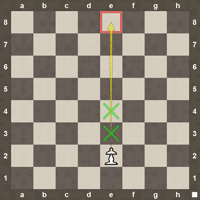
Pawns can only move forward up the board. They normally move one square at a time. The exception is that on their first move they can move two squares, but only on their first move!
A pawn is weak on its own, but it has a unique strength. When a pawn reaches the other side of the chessboard (called the back rank) the rules allow it to be promoted to any other piece (queen, rook, bishop or knight but not king!). Usually, pawns are promoted to queens, but not always – the player moving the pawn chooses.
King
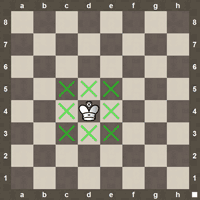
The king can move one square in any direction, providing the square he is moving to is not under threat from an enemy piece – doing so is called “moving into check”. Moving into check is illegal as the opponent could then take the king on their next turn and the game would be over.
Despite his limited mobility, the king is the most important piece on the board – guard him well. When a player cannot move his king away from threat of capture by the opponent this ends the game and is called checkmate. Capture of the opposing king is a primary objective of the game!
A king can also move two squares by the player performing a special move called castling. This rule will be fully explained in a later article.
Queen
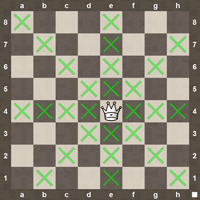
The queen can move any number of squares in any direction, providing she moves in a straight line.
Remember though, she cannot move like a knight!
This extreme mobility makes the queen the most powerful piece on a chess board.
Bishop
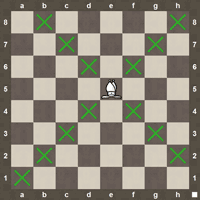
The bishops can move any number of squares diagonally, but they must always remain on the same colour squares from which they started the game. Each player has one black and one white squared bishop.
Bishops can be very powerful when placed on the long diagonals (corner to corner) or in open positions where there are few pieces remaining occupying squares of their colour.
Knight
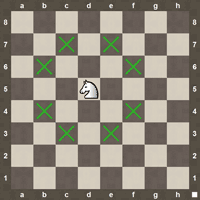
Knights have an unusual move that resembles a letter “L”. Knights move twos squares up or down, left or right and then one square at a 90-degree angle to this. This means that if a knight starts on a white square then its next move will land it one a black square and so on.
The knight is the only piece which can “jump over” other pieces and as such can be very useful in cramped board positions.
Rook or Castle
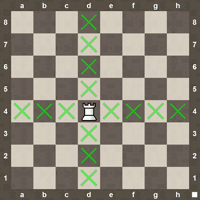
The rook moves in a straight line up or down, left or right, any number of squares. Rooks can only be used in castling if they have not moved previously.
Rooks can be very powerful on open ranks or files, especially in the end game if two rooks can be linked together (doubled).
Additional Information
These are the rules covering the basic moves of chess pieces. There are other moves such as king and queen side castling and en passant which will be dealt with in later, more advanced article (with even more diagrams!). 🙂
Chess Etiquette
Chess etiquette for over the board games means that a piece should only be touched once when moving chess pieces. For casual play this is less important, but it is a good practice to aquire the habit of touching and moving pieces once only if you plan to take part in competitive play. Of course this is unimportant in computer chess, but it is good to be aware of.
Chess Piece Moves Diagram Download
How to move chess pieces diagram – a free PDF download for all chess pieces and moves.
Now you know how to move chess pieces how about trying your new knowledge against our computer online chess game? It’s free!
Forward Chess says
Informative post for those people who are new in chess and want to learn it. One thing I want to say that learning chess with the help of apps is the best method as it allows the user to try his/her own moves.
Peter Pavel Zorman says
I like chess